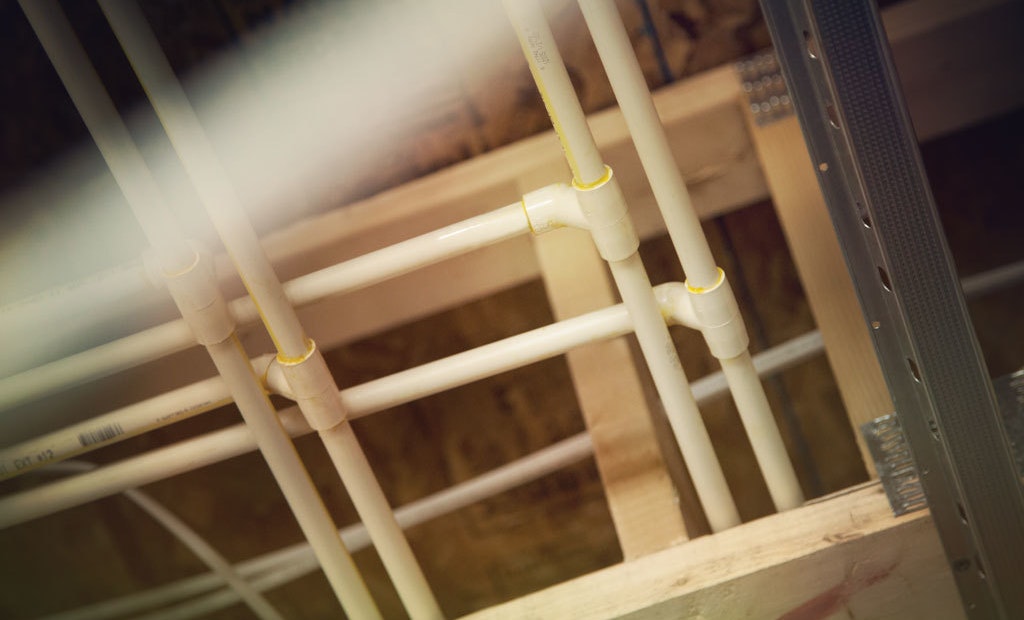Interested in Residential Plumbing?
Get Residential Plumbing articles, news and videos right in your inbox! Sign up now.
Residential Plumbing + Get AlertsThirty years ago, plumbers across the country were singing the praises of a flexible plastic pipe from Europe that resisted freeze damage and was joined with an insert fitting and crimp ring. Professional plumbers raved about how this “wonder pipe” saved them time and money and was the greatest thing since sliced bread.
The product in question: Polybutylene, also known as Qest, Safeguard and Flex-temp, among other names.
Unfortunately, polybutylene systems suffered from a fatal flaw: they hadn’t been designed to work in hot, chlorinated water. These systems suffered from widespread degradation and massive failures within 10 to 15 years after their initial installation.
Two massive class-action lawsuits later and polybutylene had been removed from the plumbing code and a new generation of re-pipe plumbers set to work drawing on a nearly $2 billion settlement fund, removing at risk PB pipes.
Today, many plumbers are again singing the praises of flexible plastic pipe from Europe that resists freeze damage and is joined using insert fittings crimp (or expansion) rings. However, today’s PEX systems share many of the same weaknesses as the polybutylene systems from 30 years ago — both are from the same plastic family, called polyolefin, and both are subject to degradation and premature failure due to exposure to hot, chlorinated water.
In fact, many plumbers might be surprised to learn that since 2008, there have been at least 10 class-action lawsuits involving PEX plumbing systems stemming from pipe and/or fitting failures due to corrosion and degradation caused by normal drinking water.
Unlike the polybutylene lawsuits of the 1990s, these lawsuits have named more than 30 builders and at least 10 plumbing contractors as co-defendants, putting additional strain on contractors’ relationships with their builders and on their management as they get dragged through the class-action process.
When faced with a PEX failure today, it can be easy to blame an isolated cause, such as a bad batch of pipe, or overexposure to UV rays, however the quantity of class-action litigation suggests a more widespread, fundamental cause.
A recent technical note from the Plastic Pipe Institute (PPI TN53), states that a combination of high chlorine content and aggressive water conditions can reduce the service life of a PEX pipe.
According to the technical note: “The use of PEX tubing in a potable hot-water plumbing system with an operating temperature above 140 degrees F or system pressures above 80 psig or highly aggressive water quality or any combination thereof can significantly reduce the service life of the tubing.”
It’s important to acknowledge that there is no perfect plumbing material. Copper has a clean, professional look, but it can rapidly corrode, pit and scale in aggressive water conditions and can be very costly to install. CPVC systems are immune to corrosion, pitting, scaling and chlorine degradation, but require proper handling and care when cutting into an existing system. PEX, PERT and PPR systems, as members of the polyolefin family, are all susceptible to premature failure due to exposure to chlorinated drinking water.
Of the five plumbing system materials commonly used over the last 120 years — galvanized, copper, polybutylene, PEX and CPVC — only CPVC plumbing systems have never faced a class-action lawsuit; and while no material is without liability, some materials allow the contractor to control their risks through quality workmanship and proper design, while others are subject to uncontrollable risks from the water flowing through them.
To learn more about plumbing system risks and how to take control of these risks, sign up for the FlowGuard Gold on-demand webinar, or visit www.flowguardgold.com to learn about reliable alternatives to PEX plumbing systems.
About the author: Jonathan Simon is the market manager – North America Residential Plumbing for Lubrizol Advanced Materials.






